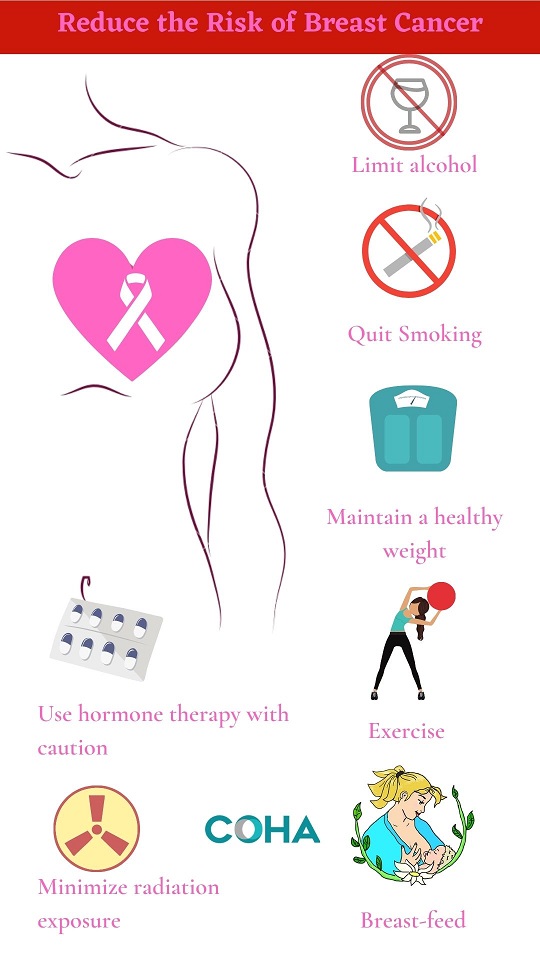


Cancer that develops in the breast cells is known as breast cancer. It can form in either the ducts or lobules of the breast. Sometimes cancerous cells can also develop in the fatty tissues within your breast.
Breast cancers are divided into two main categories: invasive and noninvasive. Invasive breast cancer spreads from the breast glands or ducts to other parts of the breast and nearby organs, whereas noninvasive breast cancer is confined to the tissue it originated.
Some of the most common types of breast cancers are:

This is one of the types of breast cancer many people are familiar with. It often originates in the milk ducts in the breast and then eventually spreads to its nearby tissues.
This is a noninvasive type of breast cancer where the cancer cells are confined to the breast ducts without invading the surrounding breast tissues.
This cancer originates in your breast lobules and later spreads to nearby tissues.
This cancer grows in the milk-producing glands of the breast and is noninvasive.
These types of breast cancers are less common:
This type of breast cancer originates in the ducts of your nipple and slowly spreads to the areola and skin of the nipple.
This is a rare type of breast cancer usually found in the connective tissue of the breast. Generally, these tumors are benign, although some can be cancerous.
This form of breast cancer develops in the lymph vessels or blood vessels of the breast.
This is an aggressive form of breast cancer that can spread very quickly. In this condition, cancerous cells block the breast’s lymph nodes and prevent their proper drainage, causing your breast to look red and swollen.
This is another aggressive type of breast cancer in which the cancerous tumor lacks estrogen and progesterone receptors and doesn’t have additional HER2 proteins on its surface. This type of breast cancer is aggressive because it spreads and grows faster than other types of breast cancer.
Metastatic breast cancer is an alternative name for stage 4 breast cancer. At this stage, the cancer advances to other areas and organs of your body, like bones, lungs, or liver.
Despite being more common in females, males can also suffer from breast cancer in rare cases because men also have breast tissue like women.
Studies have shown that lifestyle changes play a significant role in reducing the risk of breast cancer. Here are some tips to lower your risk:

Researches prove that alcohol can increase your risk of breast cancer. Therefore, a significant lifestyle change that you can adopt to safeguard yourself from breast cancer is to limit your alcohol intake, preferably to less than one drink a day.
Medical evidence suggests possible links between breast cancer and smoking, especially in premenopausal women. Quit smoking to lower your breast cancer risk.
Obesity can increase your risk of breast cancer, especially after menopause.
Any physical activity that helps you maintain a healthy weight will minimize your breast cancer risk.
Studies have shown that women who breastfeed their babies for a longer time are less likely to develop breast cancer.
Studies show that taking hormone therapy for over 3 to 5 years increases breast cancer risk. You can either limit or reduce the dosage and duration of the treatment. Consult with your doctor about the best options for your health.
Medical imaging techniques, such as CT scans, use doses of radiation. As studies show a link between continuous exposure to radiation and breast cancer, you should reduce your radiation exposure whenever possible.
Our team of breast cancer experts at Chesapeake Oncology-Hematology Associates (COHA) consists of skilled physicians like Dr. Nimmagadda, Dr. Vyfhuis, Dr. Markan, and Dr. De Luca. we provide breast cancer treatment options that include chemotherapy, targeted therapy, radiation therapy, and iron infusions. We offer a comfortable environment for our patients to ensure safe treatment. If you are looking for high-quality breast cancer treatment, contact us today to schedule your appointment.